1. Introduction
This article presents the results of a survey conducted by the author on standardization activities conducted by companies and other organizations during 2018. The survey covered standardization activities within organizations, and the target of the survey was Japanese organizations, including companies and research institutes. The purpose of this survey was to obtain useful knowledge on the management of standardization activities by understanding how and to what extent companies and other organizations are conducting standardization activities. The total number of survey targets is approximately 1,600. This survey is subsequent to the 2017 survey [1][2]. The same level of measured values as the previous survey was obtained in items such as (1) degree of standardization activities and (2) development of organizations related to standardization activities (Note 1).
2. Results
2.1 Degree of standardization implementation
Table 1.1 shows the number of organizations that are practicing standardization activities. Of the respondents, 62.4% (78 cases) answered that they are implementing standardization activities. This is almost the same number as 60.8% (62) in the last survey. Comparing the results of the previous two years, the rate of practicing standardization activities has been stable in both years [1][3].
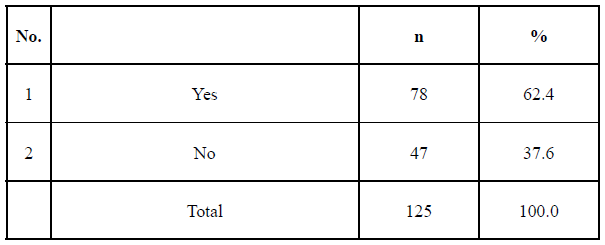
2.2 Types of standardization activities
As shown in Table 2, among the activities being conducted, standardization activities related to those for product specification and manufacturing method are the most common (63.9%), followed by manufacturing process (33.0%) and measurement (30.9%). Activities related to designs and symbols accounted for 15.5% (multiple responses possible). The percentage ranking pertaining to the type of standardization activities being conducted was similar to the previous year. These figures indicate that there is a certain level of standardization activities related to designs and symbols.
The importance of the role of standardization activities for design and symbols is considered to be comparable to that of standards for product design and manufacturing methods. This is because those standards have been shown to have the same level of effective term [4]. The effective term of standards is related to the extent to which standards are used in society. In other words, the term is considered to indicate the utility that a standard brings to society.
Standardization activities related to designs and symbols are worth discussing as a relevant policy tool. Designs and symbols are largely related to intangible corporate assets such as brands. Consumer goods brands are essential to companies and are a source of high-profit generation.
Standardized designs and symbols have the effect of promoting the development of the social environment as Public Brands. Standardization of designs and symbols is expected to play an essential role in building public social systems and infrastructure. In response to the recent coronavirus pandemic (COVID-19), standards for designs and symbols help communicate important information in a non-verbal and non-contact manner in personal and professional life [5] (Note 2).
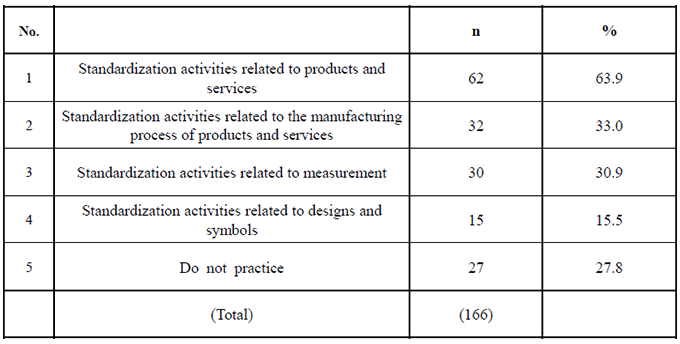
2.3 Establishment of management guidelines for standardization activities
About 30% of the respondents have established institutional management guidelines for standardization activities. (Table 3). The results also show differences by industry (Table 4). About 68% of the companies establishing guidelines indicated that their guidelines for managing standardization activities included a section on trade secret protection (Table 5).
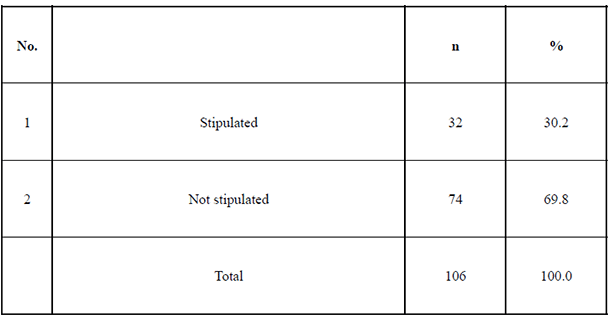
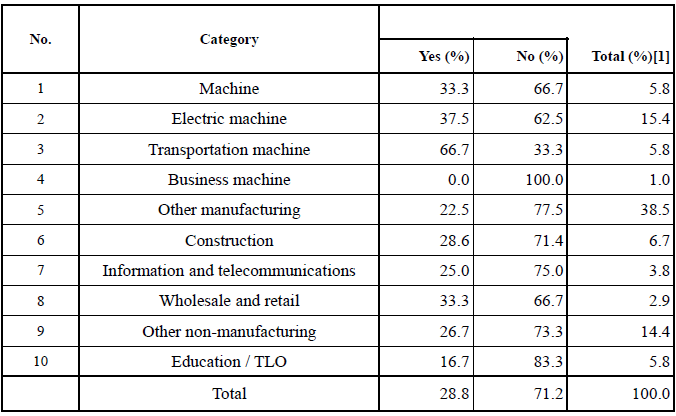
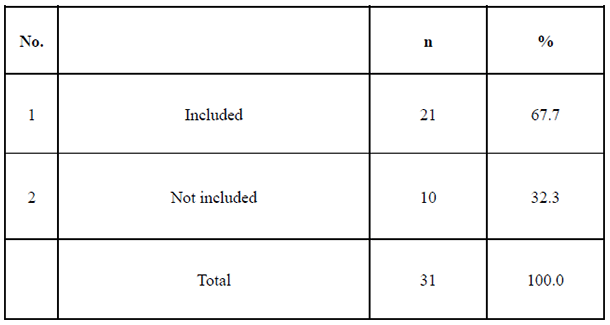
2.4 Organizational design for standardization activities
Regarding the development of an organization to oversee standardization activities, 46 (about 42%) of the respondents answered that they are developing such an organization (Table 6). The differences in R&D expenditures are shown below (Table 7).
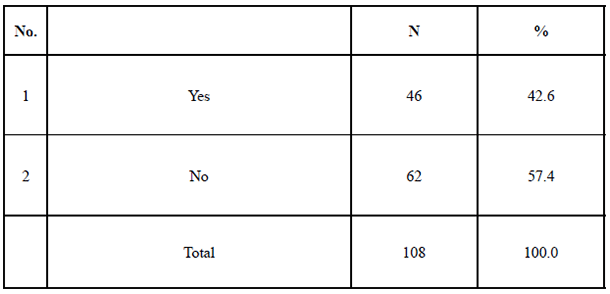
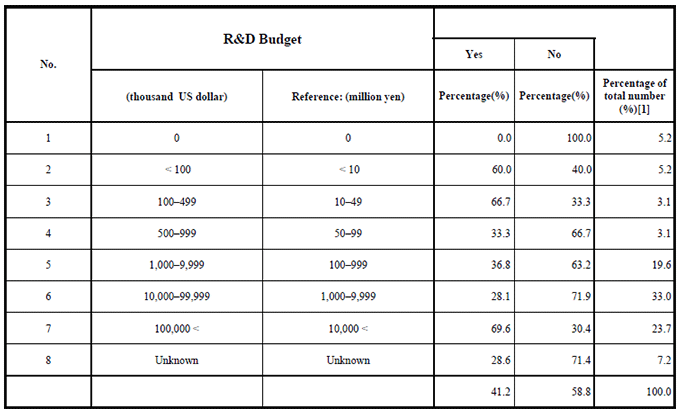
2.5. Knowledge sources for standardization activities
The most important information sources for creating standards are (1) standardization documents and (2) information from standard-setting organizations. This trend is almost the same as last year (Table 8).
This result argues against the notion that knowledge creation based on electronic text information is sufficiently effective with highly developed ICT systems. The findings show that knowledge with certain characteristics cannot be sufficiently formed from electronic text information alone and that some form of direct human interaction is still necessary for effective knowledge creation.
The development of standards requires consensus among all parties involved. For knowledge to be formed through such a process of consensus, interactive communication is essential. In other words, the knowledge from textual information alone does not ensure the successful formation of technical standards. Even with digitized communication in the form of web conferencing, two-way, direct communication between humans has been shown to be necessary for knowledge creation involving standards.
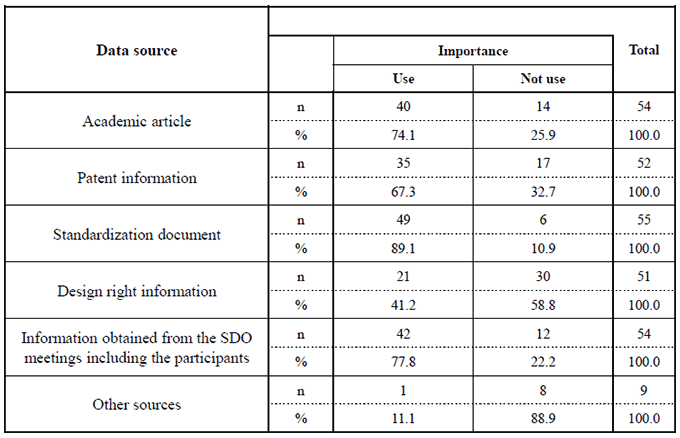
3. Summary
This survey was the second such survey conducted, and further findings were obtained from the comparison with the results of the first survey conducted in the previous year [1][2][3].
First, consistent with the previous year's survey results, this year's results showed that about 62% of the companies were conducting standardization activities (Table 1). In addition, the percentage of companies that have standardization organizations was about 43% (Table 6). The obtained values can be used as outlining numerical figures when discussing the degree of these items' activities because the numerical values of these items and those of the previous survey are very similar.
Secondly, the development of management guidelines for standardization has progressed to about 30%. The results show that a high percentage of the guidelines include provisions on trade secrets. This result is in line with the results of previous case studies that indicate the importance of information management in standardization activities [6][7].
Finally, this study's scientific and practical outcome recognizes that the mechanisms of knowledge creation in standards formation may be different from other knowledge creation systems (such as academic articles and patents). In other words, despite the advances in technology for collecting and extracting information, direct, two-way communication was shown to be essential for knowledge creation related to standardization.
The results of this survey will be provided to the Japan Industrial Standards Committee (JISC), relevant departments of the Ministry of Economy, Trade and Industry (METI), and the Japanese Standards Association (JSA), and will also be used to build an international innovation system by supplying the results to international organizations such as the ISO, the IEC, and the OECD.
Acknowledgments:
My gratitude to each person who took time out of their busy schedule to respond to this survey.
This column's survey was supported by JSPS Grants-in-Aid for Scientific Research (15K03718 and 19K01827; PI: Suguru TAMURA).



